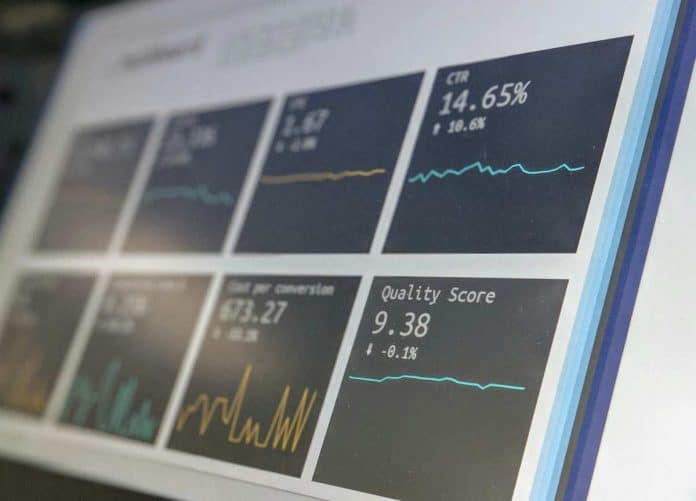Charles Telfair Centre, June 2024
In the wake of the COVID-19 pandemic, several sectors of the Mauritian work landscape have experienced labour shortages and poor rates of talent retention. To better understand the dynamics influencing this phenomenon and explore potential solutions, the Charles Telfair Centre, in partnership with Rogers, organised the “Beyond Talent Scarcity: Unlocking Mauritius’ Workforce Challenge” workshop on May 22nd at the Voilà Hotel Bagatelle.
Moderated by Manisha Dookhony, Chairperson of MINDEX, the event brought together practitioners from various sectors, including hospitality, IT, finance, health, and education, as well as experts in human resource management, law, and economics. Centred around three main themes: education, work culture, and policy, the discussions highlighted the complexity of the factors influencing labour shortages in Mauritius. This brief highlights the key outcomes of the discussion and the proposed roadmap for action.
Delving into contributing Factors
Data suggests that education, labour retention, and emigration patterns are the main factors contributing to talent scarcity in Mauritius. However, the exact impact of these factors is less clear.
Education
Education plays a crucial role as the producer of an efficient and effective future labour force. Its ability to do so was one the first element addressed: the workshop explored to what extent educational institutions and training programs were able to respond adequately to our economic needs and how it contributed or not to brain drain.
In a context of declining demographics, the historically low number of students registering for the High School Certificate (HSC) examinations raise concerns about the future job-seeking population size: “If Mauritius wants to be a high-income country, the lack of qualified graduates presents a bleak picture for the future,” one participant highlighted. The workshop underlined concerns on the dwindling quality of the public education system resulting in many students struggling to achieve basic qualifications. The ability of the education system to produce the relevant future workforce is challenged by its inadequacies in guiding students towards pertinent career pathways.
The discrepancy between university degrees offered locally and the needs of the labour market was also pointed out as a significant deficiency. Priority sectors such as ICT, finance, and economics suffer the most from this mismatch with an insufficient number of graduates in these disciplines. A such, these sectors face a dire scarcity of qualified human resources.
To compound this gap, factors such as the lack of specialised degree and the strong presence of international recruiters for study abroad contribute to exacerbate the brain drain and hence the local talent shortage. The absence of certain specialised degrees in local universities, give students no choice but to study abroad. Students may also turn to international institutions, if they perceived these as offering more progressive, advanced quality programs. Similarly, the increasing number of recruitment agents from international universities in Mauritius feeds a mindset that international studies are preferable to local training. The lack of oversight on these activities was highlighted as another possible shortfall of the educational landscape.
Throughout the discussion, it emerged that the shortcomings of educational institutions are structural in nature. From decreasing quality education to perceived inconsistencies in the current curriculum, the issues raised suggest that addressing them would likely require systemic reforms and a change of mindset.
Labour Retention and Emigration
In the context of an aging population and a declining workforce size, the Mauritian labour market displays various push factors contributing to low retention rates and increased emigration patterns.
Work culture
With the first three to nine months of employment being critical for labour retention, the latter and related brain drain were seen as a direct result of inadequate work culture with perceived limited equity and inclusion within public and private organisations. These unfavourable conditions, it was argued, are driving work emigration from Mauritius.
One participant pointed that “today’s generation seeks a work culture prioritising work-life balance, autonomy, and growth within their work environment”, elements that employees perceive to be lacking in the current labour market. Perceptions of nepotism and systemic inefficiencies across the public and private sectors contribute to local dissatisfaction and the desire to seek employment abroad.
Wage and careers
A core driver of emigration highlighted during the workshop is our inability, in Mauritius, to compete with international wage levels compounded by the more limited career prospects that Mauritian organisations are perceived to offer compared to global organisations. Wage and career prospects were also highlighted as those leading to most dissatisfaction in the Mauritius National Employee Survey. One participant added that “despite companies striving to address these gaps, workers are still deciding to leave”.
Socio-Cultural context
Indeed, the roundtable offered insights into sociocultural factors driving emigration. The lack of adequate human experiences in terms of healthcare, family dynamics, social fulfilment, and security was identified as instrumental in fostering brain drain.
For instance, limited access to efficient healthcare services was raised as a motive. One participant specified that some individuals decide to migrate to ensure better healthcare for their families and aging parents through family reunification procedures.
Local family dynamics, which can be unsupportive of individual independence, and the lack of public spaces for social realisation were also identified as contributors to emigration among the youth.
Diaspora
With limited or ineffective incentives for the return of the diaspora, the country has not yet been able to fully capitalise on its large educated and skilled diaspora.
Participants noted a certain detachment between Mauritians abroad and their country of origin. This phenomenon is evidenced, they argued, by the low rate of remittances being sent to Mauritius compared to other Small Island Developing States (SIDS).
It was also highlighted that those among the diaspora who have returned have done so out of necessity rather than choice, with family needs being a primary reason for return migration. Participants who have migrated back to Mauritius after working overseas mentioned the difficulty of adapting to the local work culture, which, among other things, offers less flexibility and opportunities for challenging careers. They also shared that the reduction in life and cultural experiences upon returning was an additional drawback.
Recommendations
The workshop identified some initial steps for a labour retention roadmap.
Educational Reforms
- Strategic higher education & vocational streams: To address perceived inconsistencies between education and labour market needs, participants recommended comprehensive educational system reforms. Specifically, they suggested that Mauritius draw inspiration from Singapore’s educational strategy, which sets specific quotas to ensure sufficient human resources for priority economic sectors. The workshop proposed that Mauritius could implement similar practices to alleviate labour shortages in key sectors.
- The proposition for a schooling system focused on redressing economic gaps by steering students into sectors most affected by labour shortage was, however, not unanimous. Referring to the high numbers of students choosing to undertake their tertiary education abroad, it was posited that locally producing graduates with a varied skills set could also prove valuable to Mauritius. More so as the absence of more specialised degrees in local universities may well be also contributing to brain drain, as students turn to international universities that offer more progressive degrees.
- Employer partnerships with education providers: Institutions should also strive to equip students with a clear understanding of the career pathways and potential work experiences offered by different courses. This could be achieved through improved partnerships between universities and industry, providing students with more sustained workplace experiences through work-integrated learning programs, such as long-term internships and industry projects. A young-adult participants highlighted that: “while I had little optimism for my future in Mauritius at the start of my studies, my experiences at university through industry projects, industry visits and internships have changed my perceptions: I believe now, that there are interesting career growth prospects for graduates in Mauritius”.
- Work-Study balance: On a more practical side, universities and training institutions and employers need to get better at tailoring student timetables and work planning to allow positive education and work experiences. This is particularly important for international students who can legally work for up to 20 hours per week.
- Communication Bridges: The disconnect between young adults’ perceptions and aspirations and what employers can provide could be addressed by multiplying initiatives to create effective communication channels between the education sector, the industry, and the youth. Such efforts would allow for a better understanding of young people’s professional and personal aspirations, but also for the youth to better understand what Mauritian employers have to offer.
Labour Force Reforms
The workshop participants advocated for policy reforms regarding wages, labour retention, and attracting the diaspora back to Mauritius as well as aligning company culture with workers’ expectations.;
- More competitive remuneration packages: Participants suggested that strategic incentives, such as competitive remuneration and benefit packages, could not only encourage Mauritians to stay in the local labour market but also attract highly skilled migrants to the island. According to theory and evidence higher pay leads to improved employee productivity, turnover and recruitment.
- Connecting the diaspora: To engage the diaspora in the island’s development, it was suggested to create a platform where Mauritians abroad can register and stay updated on local opportunities. Such platform could be managed by stakeholders such as the Economic Development Board and Business Mauritius.
- Extending the Retirement age: Extending the retirement age was argued to be effective in retaining experienced professionals in the workforce, thereby mitigating the current scarcity of qualified talent.
- Organisational Culture Shifts: Rethinking organisational culture by developing more inclusive, flexible and empowering work cultures would help attract and retain talent. They suggested implementing strategies to improve workplace engagement by promoting better work-life balance, transparency, employee autonomy and living the company’s stated missions and values with authenticity. Employers should enhance their talent management systems with clear and transparent communication around pay structures and potential career growth opportunities within the organisations. Such initiatives would not only help attract and retain talent, it would also improve company performance.
Diversifying the Workforce
- Structural Planning: More generally, a lack of structural planning was identified at the national level. To address this deficiency, participants called for less diversification of focus areas and recommended building expertise in key sectors such as finance, ICT and tourism. They argued that such a strategy would create a viable economic structure, reflecting a more positive image of the island and attracting both local and international talent. This could be achieved through better communication and partnership between the public and private sectors, working together to design creative ways to build expertise on the island.
- Tapping into the African Talent pool: While retaining local labour and encouraging return migration were central recommendations, it was also highlighted that tapping into the African talent pool could help remedy the labour shortage. Migration from Africa to Mauritius can be enhanced through improved education, work opportunities, and legislation to facilitate labour movement. To attract professionals, the workshop recommended implementing cultural integration strategies along with better wages. Additionally, participants advocated for Mauritius to further explore development opportunities in collaboration with African countries.
- Tapping into the female labour pool: Using the feminisation of the textile industry in the 80s & 90s as an example, participants urged for the design of strategies to further attract female workers into the labour market, given the current low level of female labour force engagement. Beyond greater government incentives, current organisations are shaped and moulded with a male employee as its typical worker, a bias reflected in workplace design and function. To address this gender gap, companies can develop strategies to better accommodate the specific needs of women.
As Mauritius faces an unprecedented shortage of labour, endangering its competitiveness and productive capacity, the workshop provided valuable insights into the multifaceted nature of talent scarcity. While the challenges are significant, the solutions discussed offer a roadmap for building a sustainable diversified pool of available talent. By reforming the educational system, implementing strategic policy changes, enhancing corporate contributions, and leveraging the country’s unique advantages, Mauritius can unlock its workforce potential and build a sustainable future. The engagement of all stakeholders, from government and educational institutions to businesses and the diaspora, will be crucial in making this vision a reality.
The Centre wishes to thank Manish Bundhun, Chief People executive at Rogers and Manisha Dookhony, Chairperson of Mindex for giving their time by joining the organisation committee of the workshop and for their invaluable insights in structuring the discussions.
Main photo by pch.vector on Freepik
Charles Telfair Centre is an independent nonpartisan not for profit organisation and does not take specific positions. All views, positions, and conclusions expressed in our publications are solely those of the author(s).
![]()











